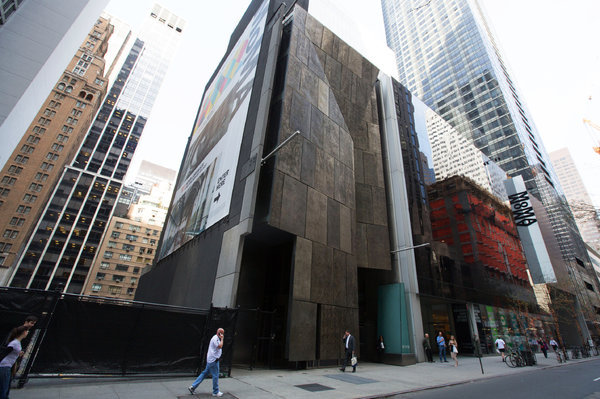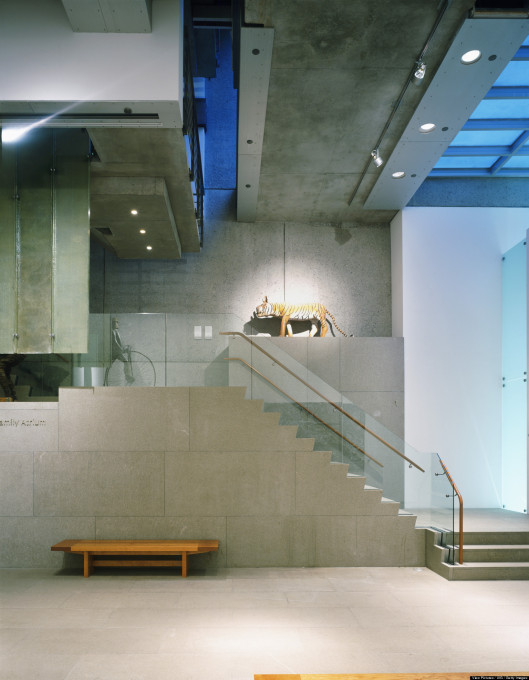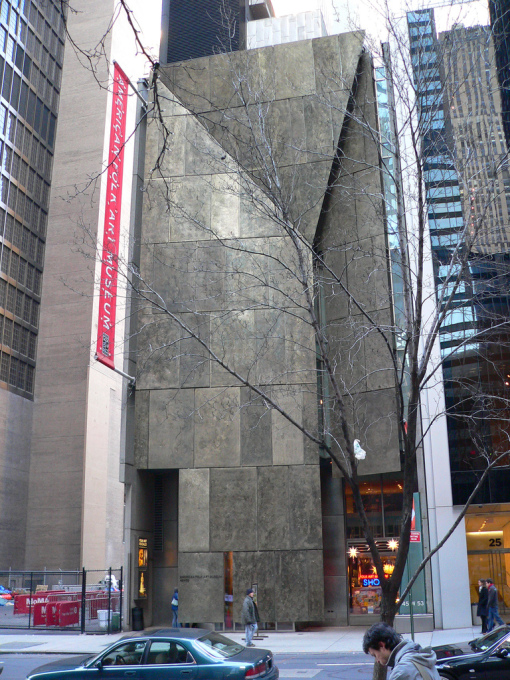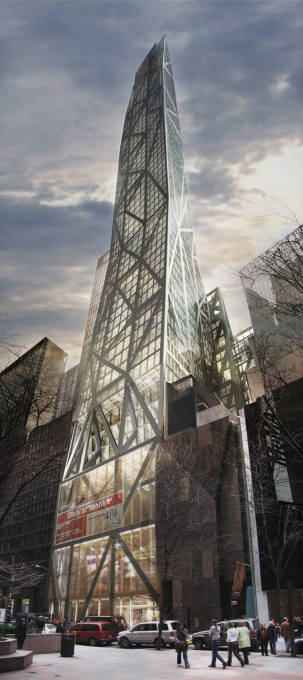“Theoretically, MoMA is about newness. Newness is ambiguous. It cannot last; it cannot have a tradition…” (Rem Koolhaas on his MoMA renovation proposal, 1997)
MoMA’s recent announcement that it will tear down the adjacent building of the former American Folk Art Museum, designed by the architects Tod Williams and Billie Tsien and built only in 2001, has started a public controversy about the attitude of one of the world’s most prominent art institutions towards preservation.
MoMA has already been expanding its territory for more than 70 years, devouring many of its neighboring buildings as it grows, and in the process destroying architectural substance again and again – as early as 1937, it tore down a townhouse to make way for its original building. Plans for its next 52,000-square-foot expansion to occupy space within Jean Nouvel’s upcoming Tower Verre were announced in 2007, but the future of the Folk Art Museum building was unaffected by MoMA’s growth for some time. It was only in 2011, when the Folk Art Museum closed due to financial problems and the empty building was acquired by MoMA, that it became clear that it had become part of its powerful neighbor’s development strategy. MoMA’s recent confirmation that it will completely destroy this building has raised questions about its mission for the future.
The concept of the tabula rasa and the impulse to start from scratch is deeply entrenched in the idea of modernism itself. Le Corbusier for one, planned to destroy large parts of central Paris to build the notorious Plan Voisin. His radical plan was not executed, but his ideas continue to influence city planning today. Almost a hundred years later MoMA is apparently sticking with the modernist ideology of perpetual reinvention, only made possible by destruction of the original substance.
But this is also a sign of a latent schizophrenic conflict that is becoming a major problem for MoMA the more it grows. For there is a dichotomy between a museum’s assumed mission to preserve the objects it owns, and this specific museum’s constant institutional redefinition and renewal in line with the perpetual promise of modernism. It is one that Rem Koolhaas pointed out during the charette for the last expansion in 1997, when he got into trouble for proposing changes to the museum’s garden, becoming in the process himself a victim of this schizophrenia: an inherent conflict between MoMA’s reputation and its past and the idea of perpetual newness. Thus Yoshio Taniguchi, the winner of the 1997 competition, preserved some parts of earlier buildings – including the glass and marble façade by Philip Goodwin and Edward Durrell Stone, and elements of Philip Johnson’s expansions – as sacred relics of its glorious past, but the largest parts of the structure were sacrificed according to the argument that they would not remain functional into the future.
Due to this logic, the idea of preservation cannot apply to a building that has not been part of the legacy of MoMA and does not bear its aesthetic code. The success of MoMA has reached a critical limit when the institution is ready to ignore the signs of our time that no longer support the ideas of modernism without reserve – even if the cost of expansion amounts to architectural destruction.
- Andres Lepik, Munich
Andres Lepik is director of the Architekturmuseum der Technischen Universität München and worked as a curator in the Architecture and Design Department of MoMA in New York from 2007 to 2010.
An online petition to save the FAM can be found at Change.org.








